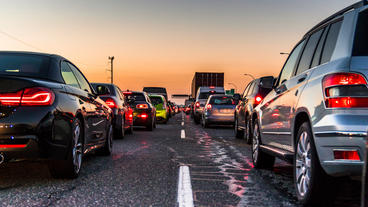A new TPEC report presents an analysis of motorization trends in Minnesota between 1980 and 2021. Four key variables were used: the number of registered vehicles, vehicle-miles traveled (VMT), fuel consumption, and vehicle crashes. The trends have implications for transportation revenue streams in Minnesota, particularly for roadway infrastructure investment.

The report provides general trends for the state as well as changes by county. It updates and builds on an analysis published in 2019, with new sections on alternative fuel vehicles and vehicle crashes. The report also discusses the impacts of the COVID-19 pandemic on Minnesota motorization trends. Data come from the Minnesota Transportation Finance Database, which was created by TPEC researchers and is updated regularly.
The report was written by TPEC researchers Camila Fonseca-Sarmiento, Raihana Zeerak, Adeel Lari, and Jerry Zhao.
The report has several interesting findings:
- The number of registered vehicles has continually increased since 1980 (although growth has slowed since the 2000s). However, the number of registered vehicles per capita and per county declined significantly in recent years. Likewise, VMT and fuel consumption increased but their per capita measures decreased.
- The pandemic had significant impacts. Vehicle registrations increased in 2020 as people sought to physically distance and reduce transmission risk. While VMT peaked in 2019, it declined sharply in 2020 and did not return to pre-pandemic levels as of 2021. The significant increase in remote work may have long-lasting implications on vehicle ownership and travel demand.
- Another pandemic impact: In 2020, the number of vehicle crashes (property damage, injury, and fatal) fell significantly because of the drop in travel, continuing a downward crash trend begun in 2004. While the number of crashes started increasing in 2021, it was still well below pre-pandemic levels. Fatal crashes, however, rose significantly: up 10.8 percent in 2020 and 22.2 percent in 2021.
- The number of alternative fuel vehicles in Minnesota—particularly electric vehicles (EVs)—has been increasing. Between 2020 and 2021, the growth rate was 44.2 percent for EVs. In 2016, alternative fuel vehicles represented 1.3 percent of total light-duty vehicle registrations; this share rose to 2.3 percent in 2021.
The report also analyzes the evolution of roadway revenues and expenses at the federal, state, and local levels over time. Revenues from vehicle registration and vehicle sales tax have offset the reduction in the share of revenues from the fuel tax at the federal and state level. However, revenues per VMT have decreased significantly, and per capita fuel consumption is expected to continue decreasing because of increases in fuel efficiency, remote work, and new and more environmentally friendly technologies. These trends are important for roadway planning and funding decisions.